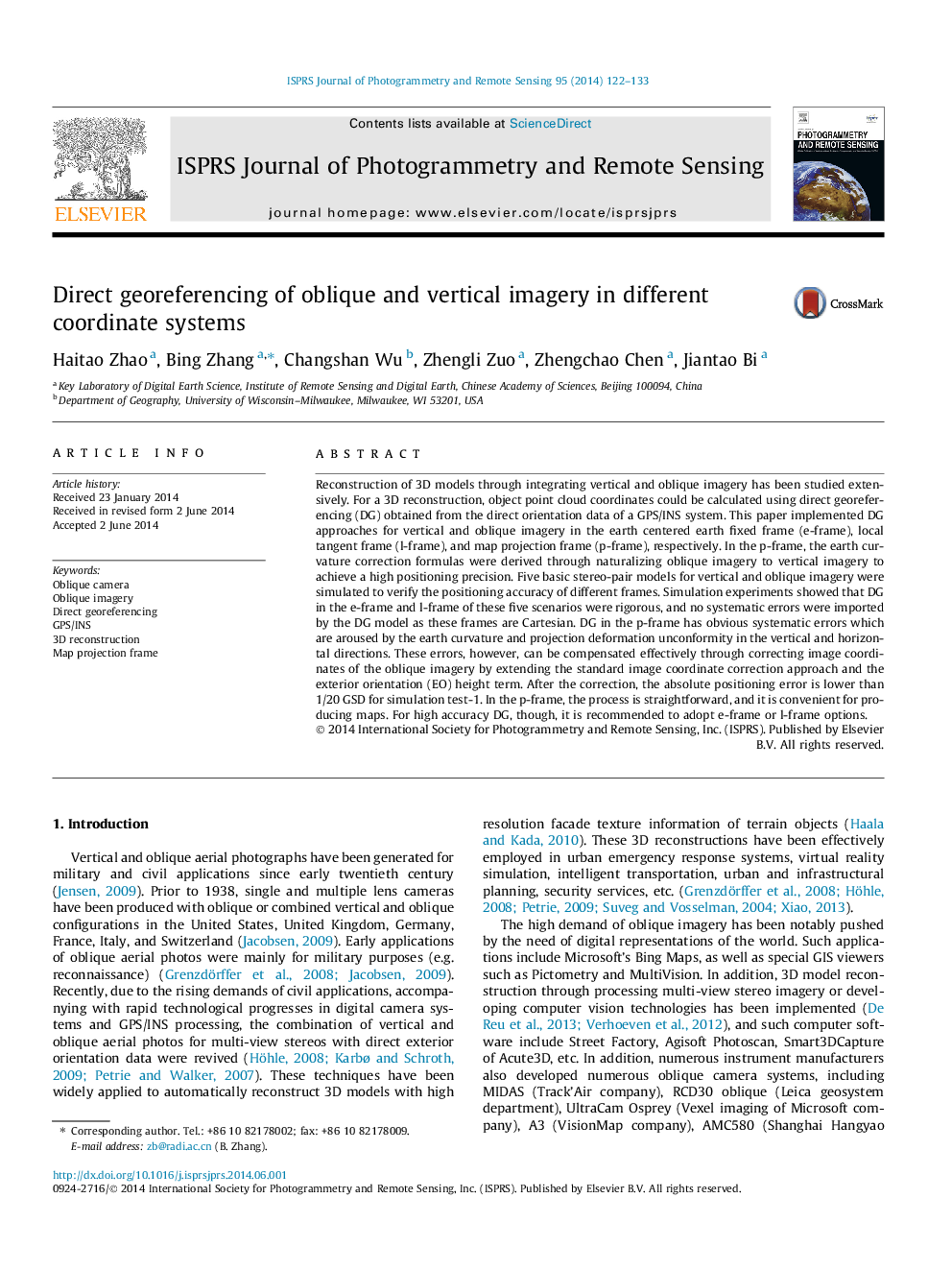| Article ID | Journal | Published Year | Pages | File Type |
|---|---|---|---|---|
| 6949609 | ISPRS Journal of Photogrammetry and Remote Sensing | 2014 | 12 Pages |
Abstract
Reconstruction of 3D models through integrating vertical and oblique imagery has been studied extensively. For a 3D reconstruction, object point cloud coordinates could be calculated using direct georeferencing (DG) obtained from the direct orientation data of a GPS/INS system. This paper implemented DG approaches for vertical and oblique imagery in the earth centered earth fixed frame (e-frame), local tangent frame (l-frame), and map projection frame (p-frame), respectively. In the p-frame, the earth curvature correction formulas were derived through naturalizing oblique imagery to vertical imagery to achieve a high positioning precision. Five basic stereo-pair models for vertical and oblique imagery were simulated to verify the positioning accuracy of different frames. Simulation experiments showed that DG in the e-frame and l-frame of these five scenarios were rigorous, and no systematic errors were imported by the DG model as these frames are Cartesian. DG in the p-frame has obvious systematic errors which are aroused by the earth curvature and projection deformation unconformity in the vertical and horizontal directions. These errors, however, can be compensated effectively through correcting image coordinates of the oblique imagery by extending the standard image coordinate correction approach and the exterior orientation (EO) height term. After the correction, the absolute positioning error is lower than 1/20 GSD for simulation test-1. In the p-frame, the process is straightforward, and it is convenient for producing maps. For high accuracy DG, though, it is recommended to adopt e-frame or l-frame options.
Related Topics
Physical Sciences and Engineering
Computer Science
Information Systems
Authors
Haitao Zhao, Bing Zhang, Changshan Wu, Zhengli Zuo, Zhengchao Chen, Jiantao Bi,
